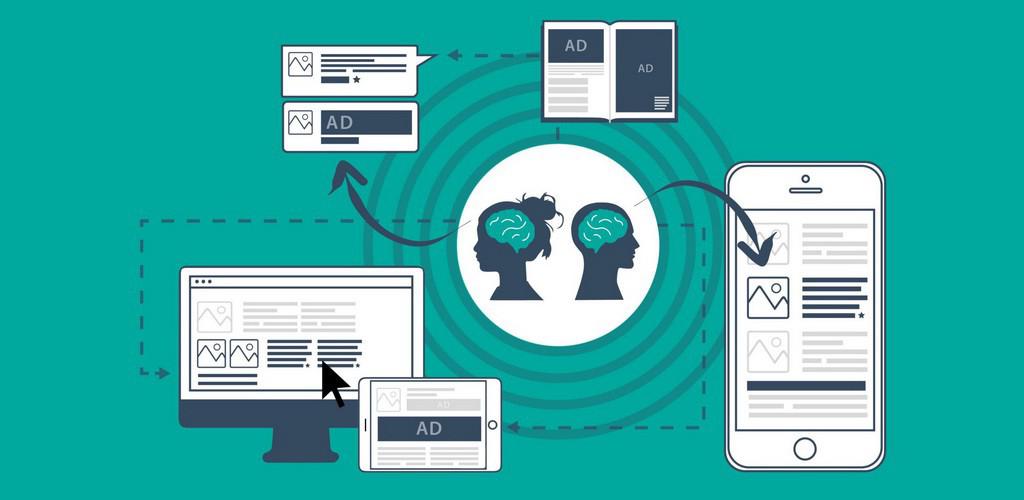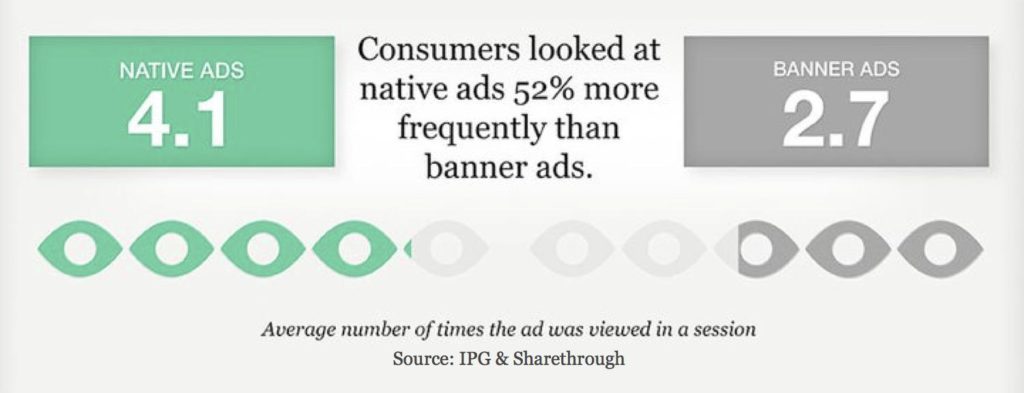In this article, you will find out what native advertising is and what its features are.
Many of you have probably heard the so-called native advertising. If not, you might have seen it several times.

General idea
Native advertising is a method of advertising and promoting products, companies or services in the most natural way, that is, tacitly and latently to an end-user.
A user may not even think that something is offered or advertised at the moment. And there is a great variety of examples:
- You are reading an interesting article and all of a sudden you see the name of some company which by chance offers its services on the subject described in an article;
- You are watching a movie where characters use mobile phones, TV sets and other home appliances made by the same manufacturer;
- You are enjoying a video clip of your favorite musician which is shot at the forefront of some store.
In all of these cases, you are dealing with native advertising. If you think of it, you will be able to give many examples from your own experiences.
How does a spectator, reader or listener feel at that time? Deceived, probably: they are being pushed to buy a product or service instead of being entertained or assisted. They will probably even admire the advertiser’s inventiveness with which they manage to promote a brand.
Essentially, you can encounter native advertising more frequently than you can imagine. By the way, in all of the three cases, we can say that the advertiser made a bad job since a consumer managed to recognize advertisements. A truly well-organized native advertising should not out itself but be presented as latently as possible, but at the same time so that the viewer or reader has a desire to follow the target link, use the company services, etc.

Some features of native advertising
Statistical data relentlessly show that the share of it is constantly increasing, and there is a positive trend in the dynamics of the native advertising share. According to forecasts, over 9 million dollars are to be spent on native advertising. And there is no doubt that the invested money will pay back soon.
Over half of the surveyed users claim that native promotion is more pleasant to perceive even if it was exposed than annoying banner ads. Moreover, over 20% admit being willing to purchase or order services from a company exploiting native advertising.
Here are some other statistical data:
- 62% of media companies and publishers offer to post these kinds of advertising;
- 66% of brands regularly resort to these advertisements;
- the most popular format is paid blog posts as well as social media posts. YouTube integrations in the content of famous bloggers are currently rapidly gaining popularity.
For a long time now, we are tired of the obvious obsessive advertising which aggressively “crashes” from every side and literally at every step. Therefore, a softer, veiled offer gains a more favorable attitude. The main goal every advertiser should ultimately strive to is to give the user the really necessary and useful content, only unobtrusively offering his service. Plus, advertisements should not interfere with surfing the Internet and clog all communication channels with banners and aggressive messages which now only cause annoyance instead of a desire to buy or order something.

How to make native advertising work
In general, there is only one universal recipe for how to make native advertising extremely successful. However, this relates to any other type of promotion. So, this one hundred percent effective method is to provide your target audience with the really useful and necessary content.
What is the tragedy of today’s advertising? It is really annoying. One has only to take a step into the street and they see flyers, posters, and banners everywhere. One can not open a newspaper or a magazine and not see advertisements again. Well, and what about advertising breaks during TV shows? Sometimes spectators completely lose interest in watching a show and even forget what they watched before the advertising. As a result, they try to reach for a remote, switch channels, and they do not go back to the show, consequently, they do not even see the advertising block.
Let alone the Internet advertising. A user enters a website. They want to relax, watch a funny video or read an interesting article. What do they see instead of that? Another advertising banner offering to buy something they don’t even need and will not ever need. They close banners hoping to be let alone, and in the corner of the screen, a chat window appears with the support specialist who is offering a consultation.
The result is predictable. A user closes a website completely irritated, they didn’t manage to read an article, and then they install the anti-banner tool on their PC. And they will not remember what was offered a minute earlier.
Thus, the main goal of the native advertising is to not cause irritation of the potential customer and help them solve their issue.
How to do that? There are no universal solutions. Every type of business can have their own methods. You need to involve advertising specialists in this. They will help attract your target audience and promote your product so that nobody suspects anything. And even if they do suspect, it will not cause irritation.
Please remember that native advertising should only provide useful information and not fill the content with praises towards the advertised company.
If you want to reach new GEOs and audiences, maybe it is all waiting for you on Telegram? We’ve prepared some material about Telegram audiences. What are the messenger’s users like this year? How old they are, what they do, and what they are interested in!




